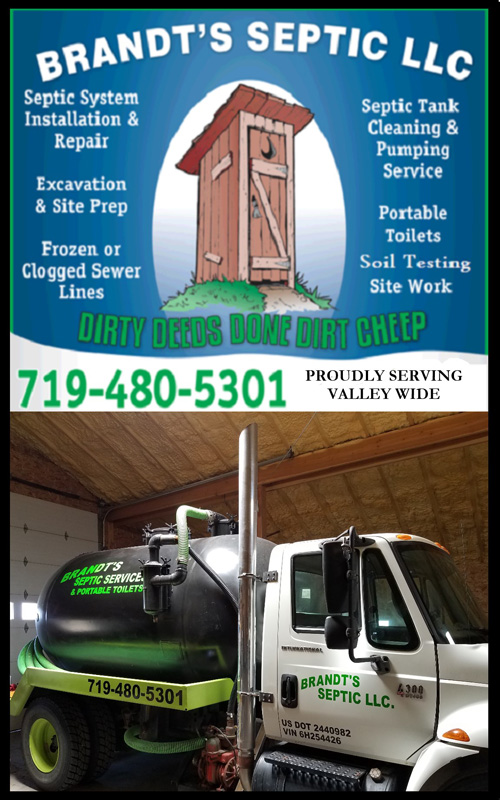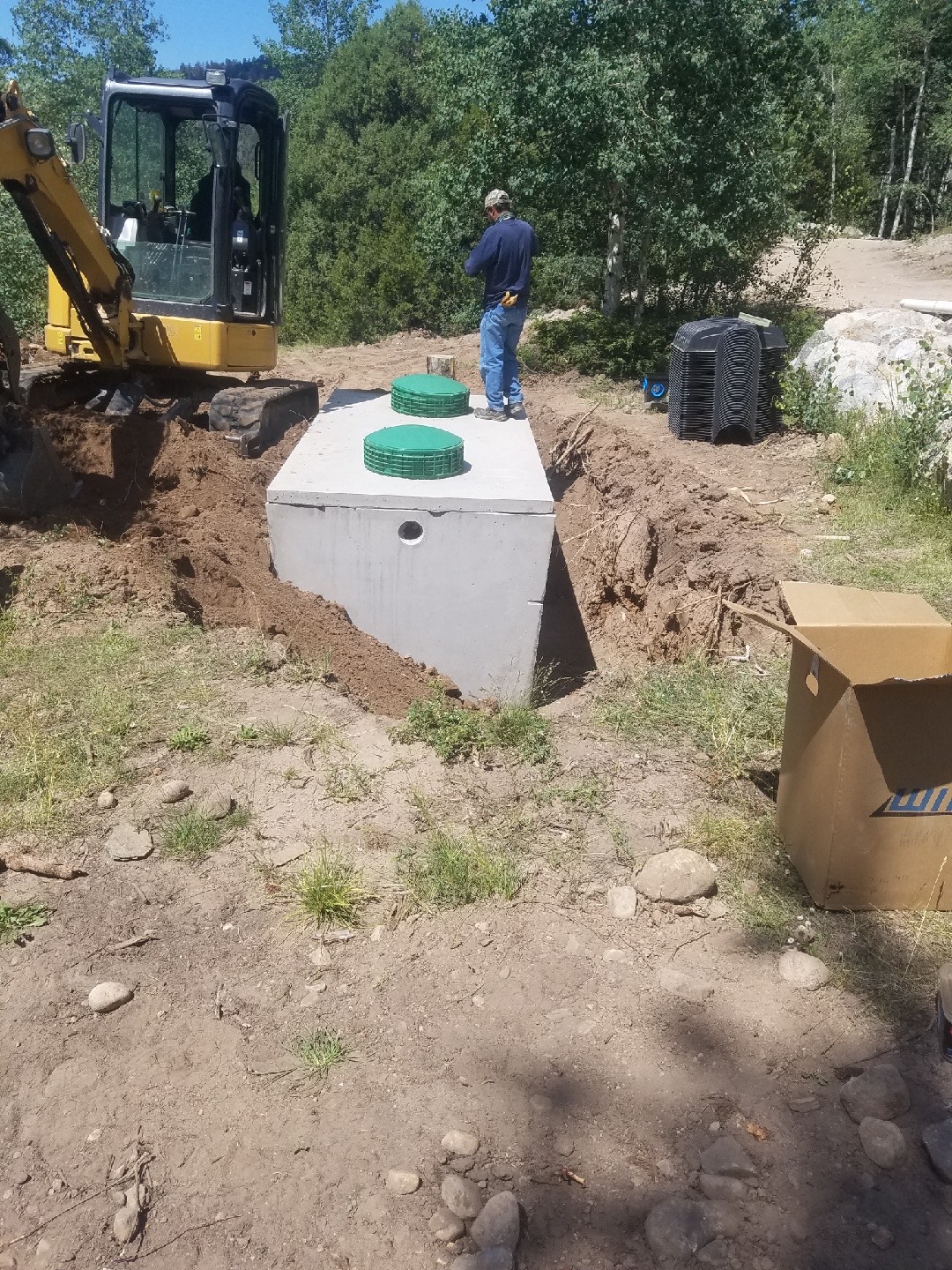- Call Us Today For A Free Quote
- (719)480-5301
- #1 Septic Tank Pumping Company throughout San Luis Valley & Alamosa Colorado
Septic tanks
Septic tank pumping
What we do?
- Septic Pumping
- Sewer line cleaning using power augers
A septic system is an onsite wastewater treatment system that processes and purifies household waste (effluent). The effluent consists of black water (toilet wastes) and grey water (kitchen sink, bathtub, and laundry wastes).

There are two main components to the septic system, the septic tank and the drain field. Primary treatment occurs in the tank where bacteria digest organic matter in the waste water. Secondary treatment occurs in the drain field where bacteria complete the digestion and purification of the effluent as it slowly infiltrates the soil.
The septic tank is a watertight underground treatment tank constructed of concrete, plastic. It is approximately eight feet long, four feet wide, and five feet deep. The tank is used to retain, store, and treat solids, as well as release effluent to the drain field. The tank size is determined by the number of bedrooms in the dwelling.
As waste water flows into the tank, the heavy solids settle to the bottom and become a sludge layer; while fats, oils, and greases float to the top forming a layer of scum. A zone of clear liquid between the layers of scum and sludge is called a clarified zone.
All three layers have billions of bacteria that live naturally in the tank and perform the first phase of treatment to break down the solids in the tank. During the process of breaking down solids, gases are produced. These gases are vented from the septic tank through the plumbing vent on the rooftop.
Partially treated effluent flows from the septic tank to the drain field. The effluent is naturally purified as it percolates down through the soil.
In order for the effluent to properly purify, the distance between the drain field bottom and the water table should be greater than 4 feet. The state of Colorado requires a minimum of Four feet from the bottom of the drain field and Three feet for pressure dosing systems.

Why Choose Brandt's for Septic Pumping?
-
Decades of Experience: With more than three decades in the septic industry, we have the knowledge and expertise to handle any septic system, big or small. Our long history in the field ensures that we understand the intricacies of septic care better than anyone else in the valley.
-
Trusted Leader: As the leading septic service provider in the region, we are known for our reliability and high-quality service. Our reputation speaks for itself—we are the first choice for thousands of homeowners and businesses across the valley.
-
Comprehensive Septic Solutions: From routine pumping to emergency repairs, we offer a full range of septic services to meet your needs. We use the latest technology and sustainable practices to ensure your septic system is not only functioning but thriving.
-
Commitment to Customer Satisfaction: Your satisfaction is our top priority. We strive to provide not just services, but solutions that offer peace of mind. Our team is dedicated to delivering timely and efficient service with a focus on customer care and education.
-
Eco-Friendly Practices: We are committed to environmental stewardship. Our pumping and dumping processes are designed to be safe for the environment, ensuring that we protect your property and the surrounding ecosystem.
Contact Us for Expert Septic Pumping
Don't let septic system troubles disrupt your day-to-day life. Contact Brand Septic & Portable Toilet Rentals, where experience and quality meet to create the ultimate customer service experience.
